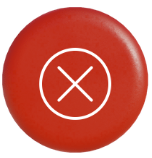Log into Google Drive and use the information below as a guide to help you identify large, redundant, or unused files you may no longer need. Click "Learn more" to view step-by-step instructions. Visit the FAQs for more information.

Find unused files
Search for files that haven't been accessed or modified in a long time.
Learn more

Spot dupes and drafts
Scan for multiple versions and file names that begin with "Copy of."
Learn more
Instructions
Follow the instructions below to complete the steps above:
How to assess your storage use
Find the largest (and smallest) files stored in your Google Drive.
- Log into your Google Drive dashboard
- On the left, select Storage; you'll see your files in descending order of file size
- Click Storage used to reverse the sort order
How to sort by file type
Use advanced search options to identify space-consuming file types like MP4, .MOV, or .WAV files.
- Log into your Google Drive dashboard and click the advanced search options icon to the right of the search field at the top of the page
- From the Type drop-down menu, select Video or Audio
- From the Owner drop-down menu, select Owned by me
- Click Search
How to find unused files
Use the advanced search options to find files that haven’t ben accessed or modified for a long time. They may be outdated or no longer needed.
- Click the advanced search options icon to the right of the search field at the top of the page
- Select Owned by me from the Owner drop-down menu
- From the Date modified drop-down menu, select one of the options
How to spot dupes and drafts
Check for duplicate files or multiple versions of drafts as they may be needlessly taking up storage space.
- Click List view in the upper right corner to make it easier to manually scan for duplicates or multiple copes.
- Type "Copy of" in the search box and click return to find that may be duplicates.
How to delete unneeded files
To remove a file from your Google Drive, put it in your Trash. The file will stay in your bin for 30 days before being automatically deleted. For more information, refer to Google's Delete and restore files in Google Drive.
Note: When you put a file in the Trash:
- If you own the file, people with whom you’ve shared it can make a copy.
- If you don't own the file, removing the file from your Drive only removes it for you.
How to empty the trash bin
Once you have deleted your files, they will be sent to your Trash. However, files in Trash still count against Stanford storage limits, so it is recommended that you empty your Trash after deleting.
- To permanently delete individual files from Trash:
- Click Trash from the left navigation in Google Drive
- Select the files you want to permanently delete
- Click the trash can icon in the top right
- Click Delete forever to confirm
- To empty your entire Trash:
- Click Empty trash in the top right of the Trash page
- Click Delete forever to confirm.
Note: It’s recommended to permanently delete your files in smaller batches if you have a significant number of them in your Trash.




